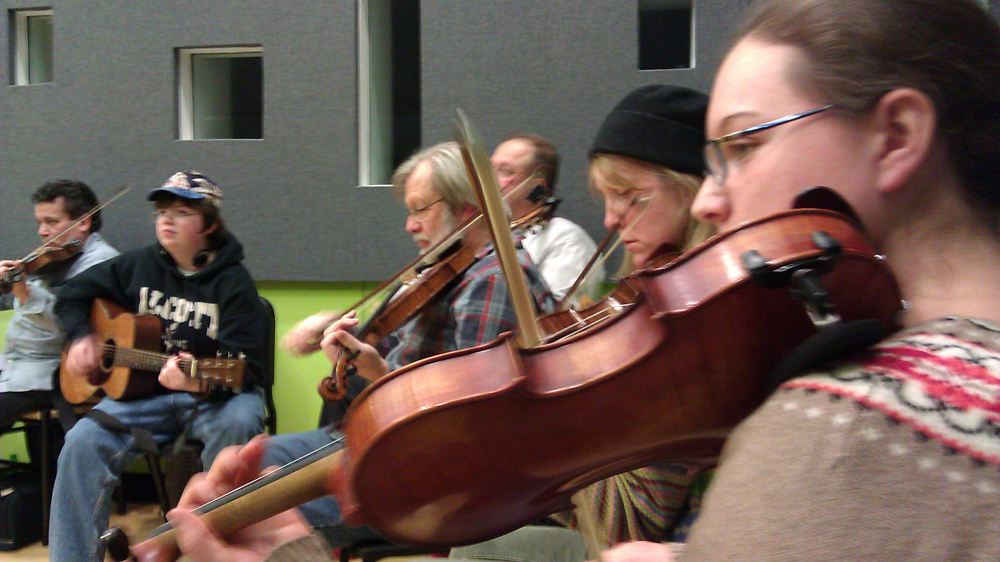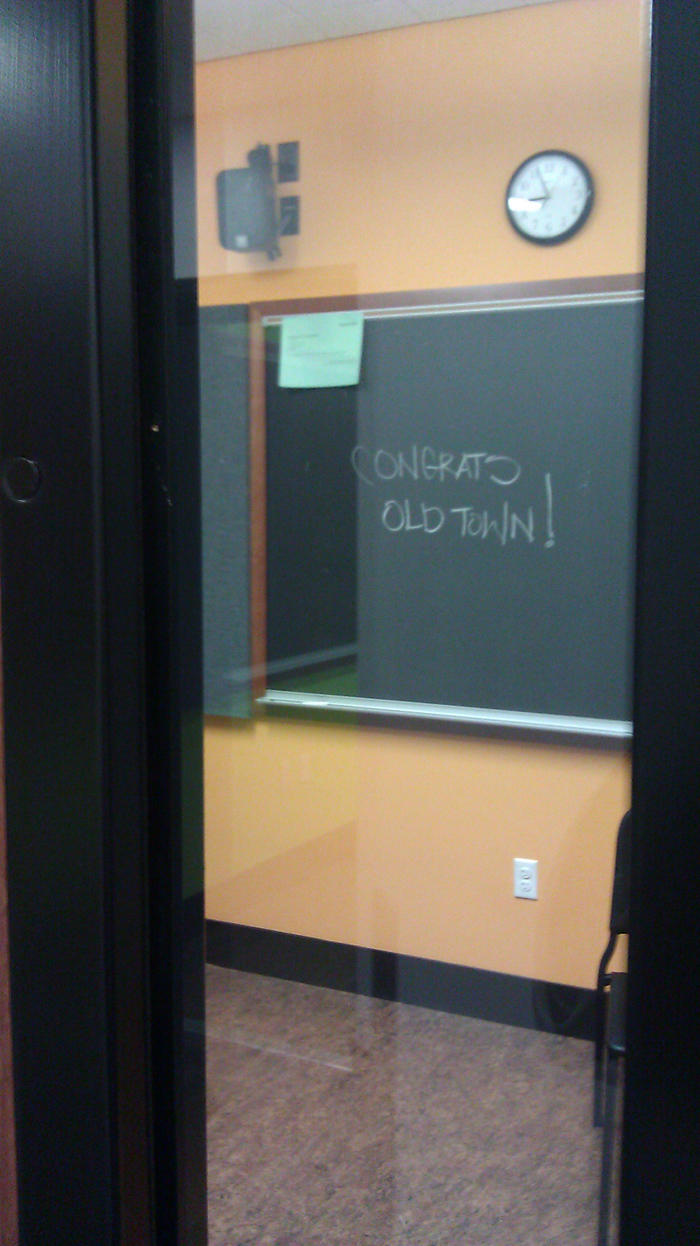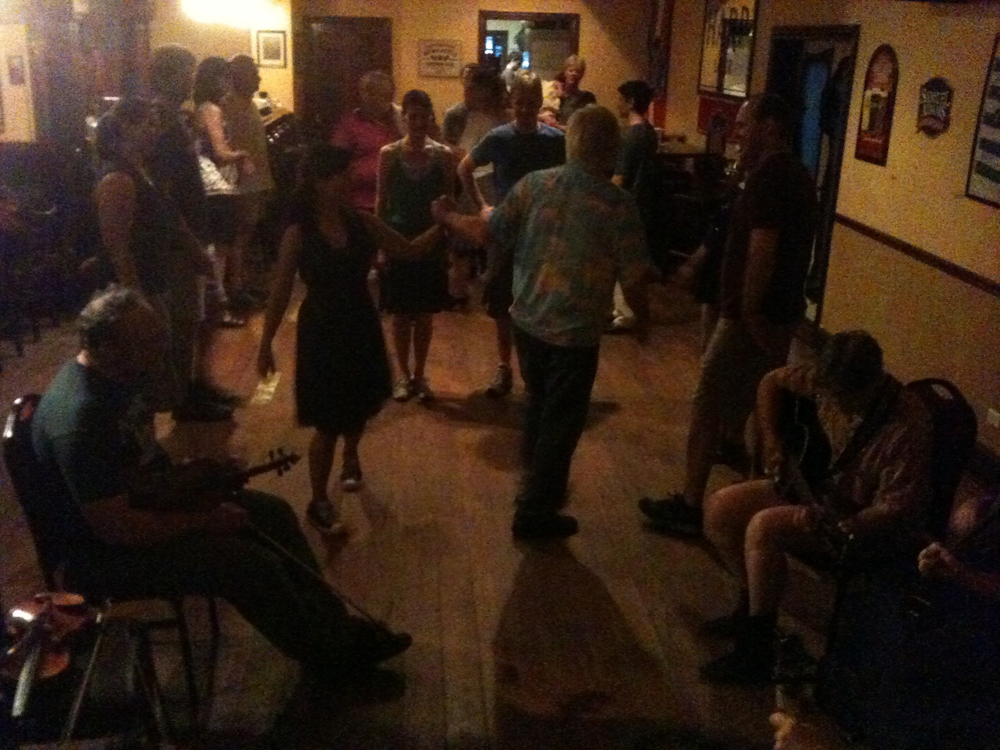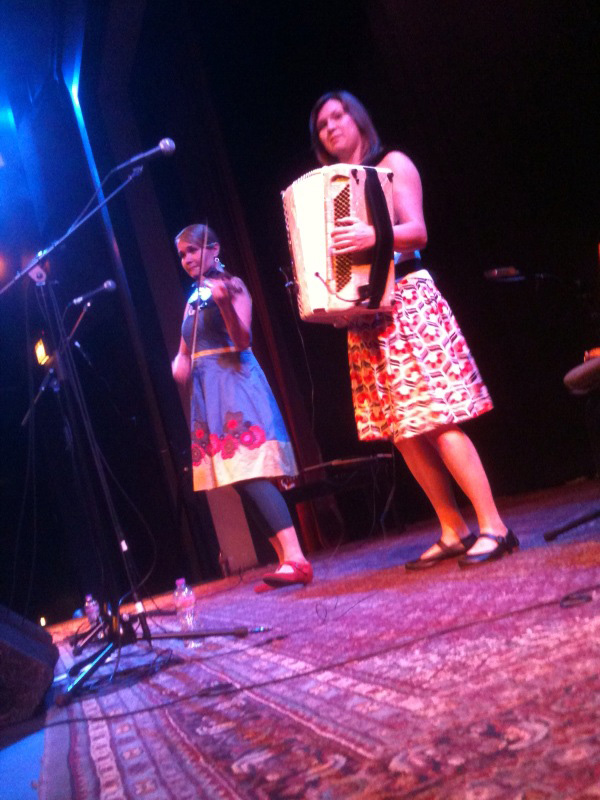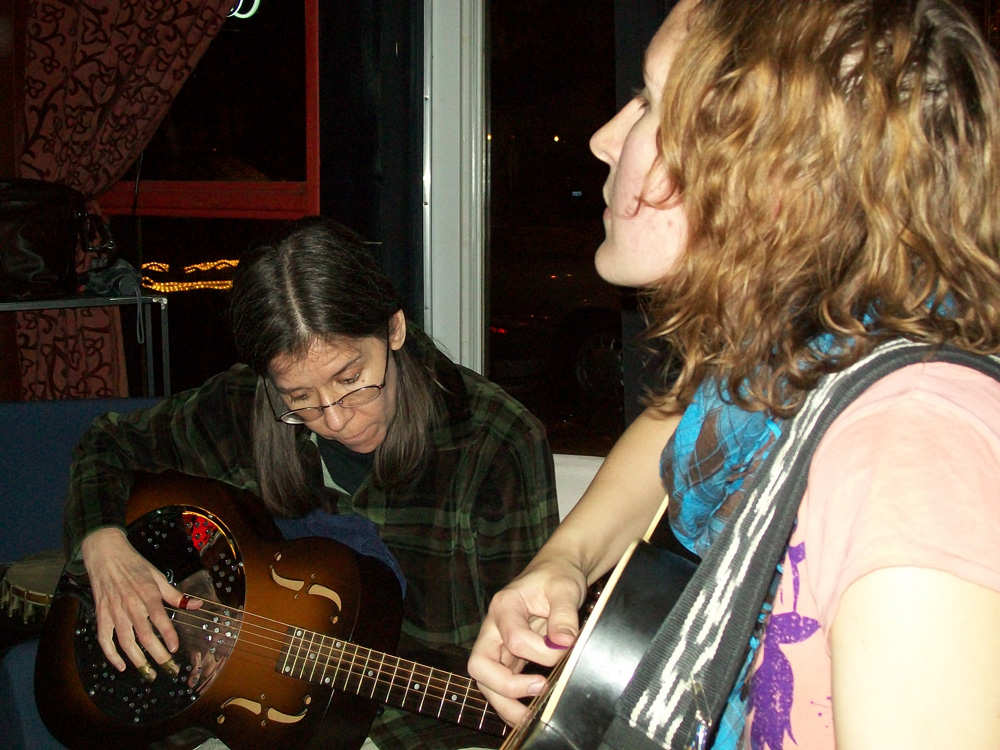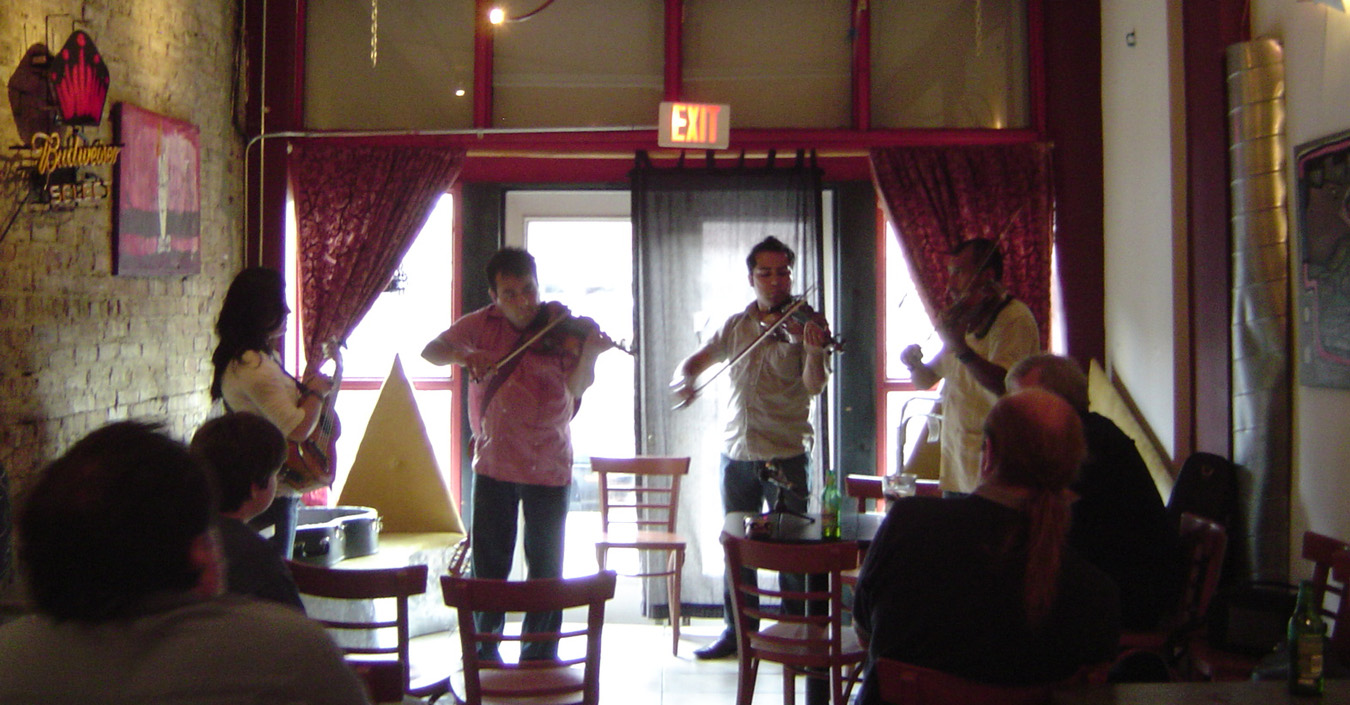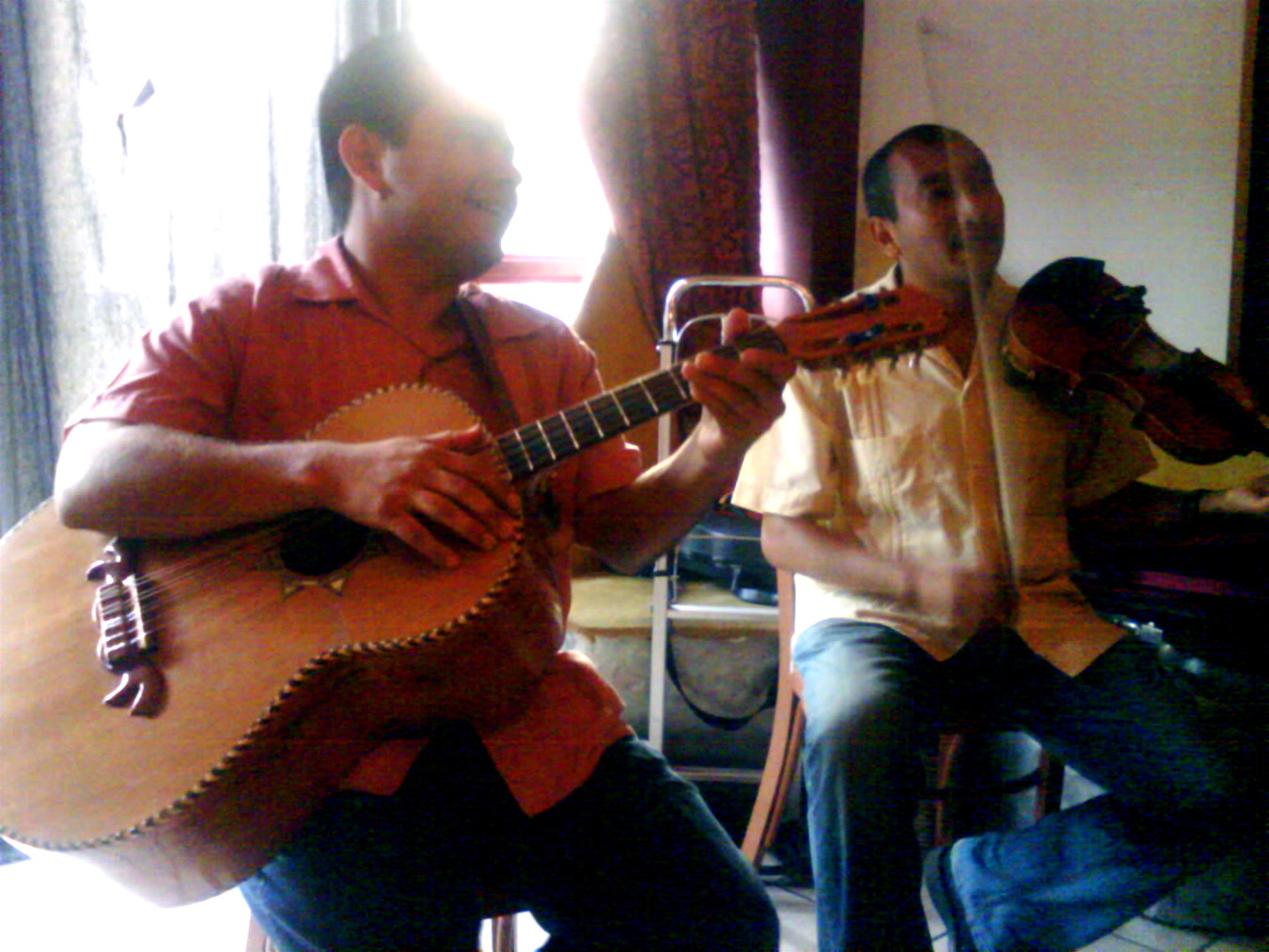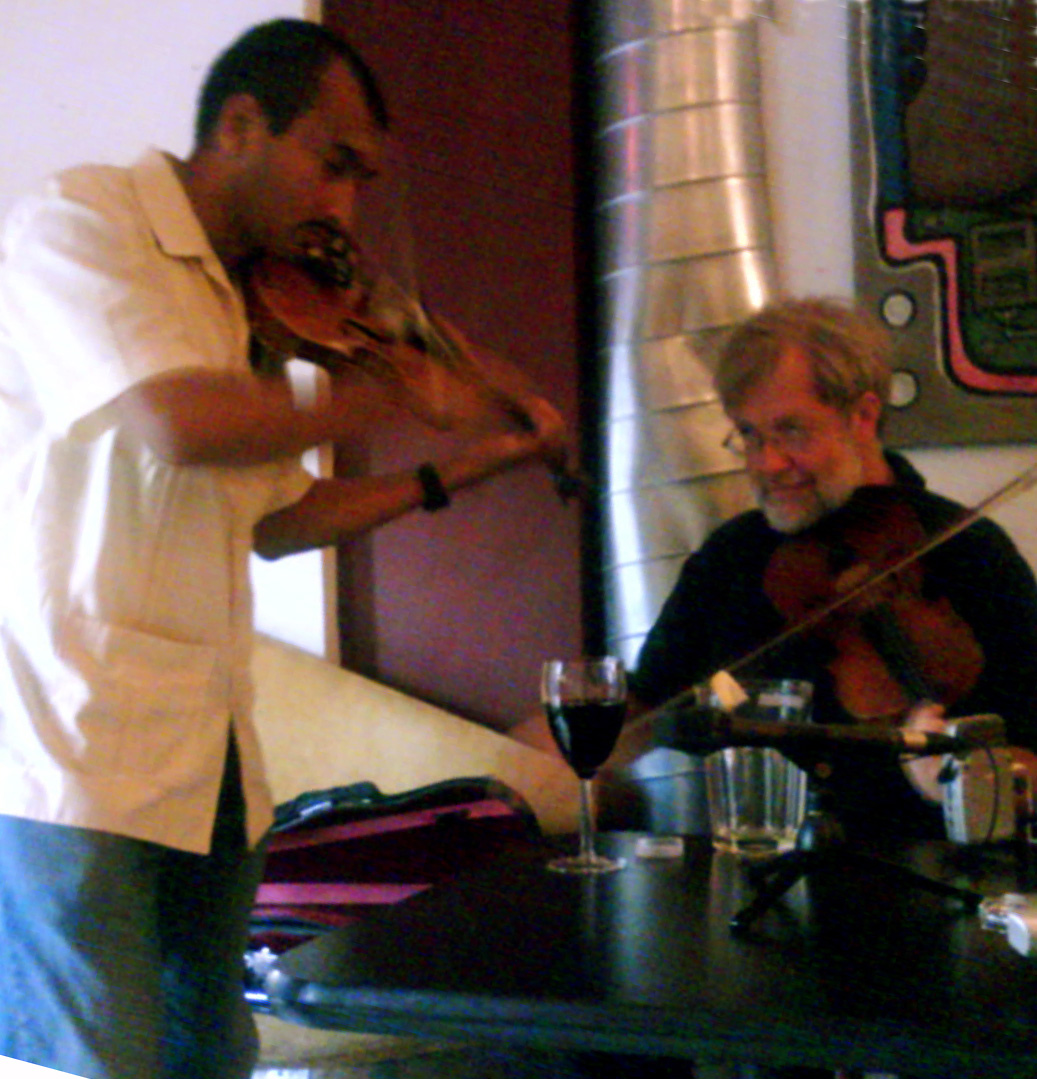Lynn “Chirps” Smith was our featured guest, playing a variety of old time dance tunes native to the Midwestern United States.
Chirps cut his old-time teeth during his college days in Charleston, Illinois, where he played with the Indian Creek Delta Boys. More importantly, following the lead of fiddler Garry Harrison, the “Crik Delters” recorded and learned tunes from scores of senior fiddlers in the southern and eastern reaches of the Prairie State. Several of these tunes showed up in Chirps’ performance at the Leadway Bar & Gallery.
Ten Cents
Joe Wingerter tune
Stella’s Jig
Gallatin Special
He started his set off with a version of “Paddy on the Turnpike,” which may owe something to Harvey “Pappy” Taylor of Effingham. But then again, it may have been closer to the “Paddy on the Handcar” recorded in 1928 by Texas fiddler A.L. “Red” Steeley.
For the last several decades, Chirps has lived in the Chicago area. For much of that time, he played with the Volo Bogtrotters an old-time string band named after a natural feature located a short hop away from Chirps’ home in Grayslake. Representing that period of his life are tunes he learned first-hand from elders elsewhere in the Midwest, including Les “Red” Raber from Michigan, Nile Wilson from Missouri, Dwight “Red” Lamb from Iowa, and Lotus Dickey from Indiana.
Ten Strike
Old Reunion
Old Ladies Pickin’ Chickens
Sweet Bundy
Other pieces he played were learned from lesser known recordings of Nebraska fiddler Bob Walters, and a favorite piece of the Native and Métis fiddlers from Central provinces of Canada.
Bob Walter’s Hornpipe
Red River Jig
Finally, we must note that Chirps is now a resident of Wisconsin. Thus he performed a piece learned from a recording of Leonard Finseth of Mondovi, and a waltz from Madison-area concertinist (I believe he calls a bandoneon), Bruce Bollerud.
Stegen Waltz
Leonard Finseth’s Polka
Around 30 musicians enjoyed the performance and the jam that followed. We played all six of the tunes posted earlier on this blog. Plus a bunch more. A request was made for “Ten Strike,” the Les Raber quadrille piece, to be posted here. The tune is, in fact, the melody to be played for the 4th figure of the Ten Strike quadrille, as printed in Gems of the Ballroom (compiled circa 1890 by Geo. B. McCosh of Dekalb, Illinois). Les learned the tune from the book, which he had just acquired in 1981 when I brought him to perform at the Indiana Fiddlers Gathering in Battle Ground. Here’s the the tune as played by Chirps. It’s in C.
Ten Strike
[audio http://drdosido.net/fiddleclub/wp-content/uploads/2008/05/ten-strike1.mp3]
The next Fiddle Club of the World meeting is coming up soon, on Saturday, May 10. It will feature the Cajun team of Will & Holly Whedbee.
Paul Tyler, convener



